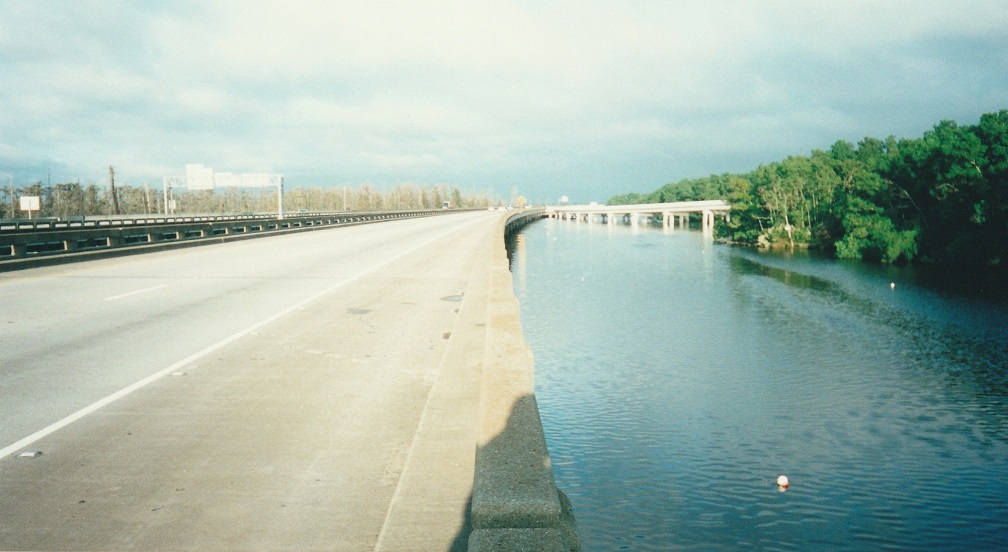

This was a slow day. It was raining, and we didn't do much. We had lunch at Johnnie's Po' Boys, where we had... but you've guessed. Terry's was oyster, mine was crawfish. We went to hear some jazz bands play at the Jazz National Historic Park, and spent a lot of the afternoon driving around aimlessly. We had dinner at The Secret Garden. And that was that.
We got up early, and got some breakfast coffee and pastries at a place called CC's. On the drive through the Quarter, I noticed the detritus of Saturday night on Bourbon Street - a huge number of plastic and styrofoam cups in the gutters. Apparently, in an attempt to curb public drunkenness, there's a law that says you can't carry drinks in glasses on the street. So the bars serve drinks in plastic or styrofoam cups. See my comments on drive through daiquiri stands, above. Anyway, we hit the road for Lafayette, about a two hour drive.
On the way out of the city, I stopped to take a picture of something that has fascinated me for a long time. When I drove through Louisiana on my trips with Bill Hunt in 1974 and 1975, I was struck by the way the freeway is built up on stilts as it goes through the swamp. This time, I took pictures:


I also found it interesting to contemplate that this freeway was Interstate 10 - meaning that if I were to hit the road and just keep going, I'd end up in Santa Monica!
Anyway, our first stop in Lafayette was the Acadian Cultural Center. Here we toured a musuem of Cajun (Acadian) culture, and then saw a film describing how the Acadians were thrown out of Canada and drifted down to Louisiana.
The next stop was Vermillionville. This is one of those "living history" places, like Williamsburg, which recreates an entire Cajun village. We began by having lunch - a Cajun buffet - at the village restaurant, which bore the grand name of La Cuisine de Maman (which sounds better than Mom's Eats). Next, we went to a cooking demonstration, where an old woman with a charming accent showed us how to make a roux.
We then wandered around the village, reading about the various buildings and plants from the brochure, and stopping in at some places to talk to the "villagers" about the crafts demonstrations they were doing. For example, we talked to one woman who was spinning thread, and another who was making rosaries out of seed pods.
The following pictures were taken around the village:
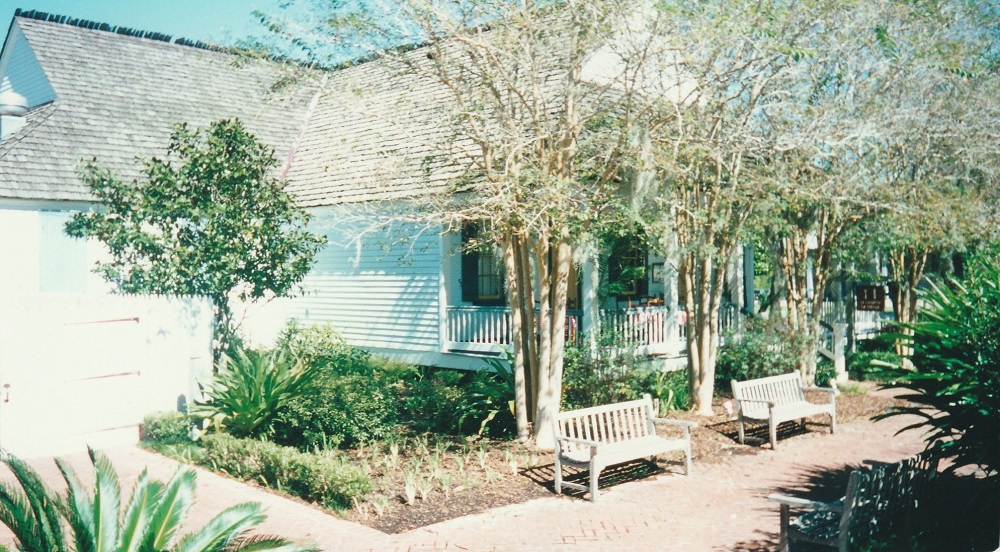
The courtyard behind the main entrance
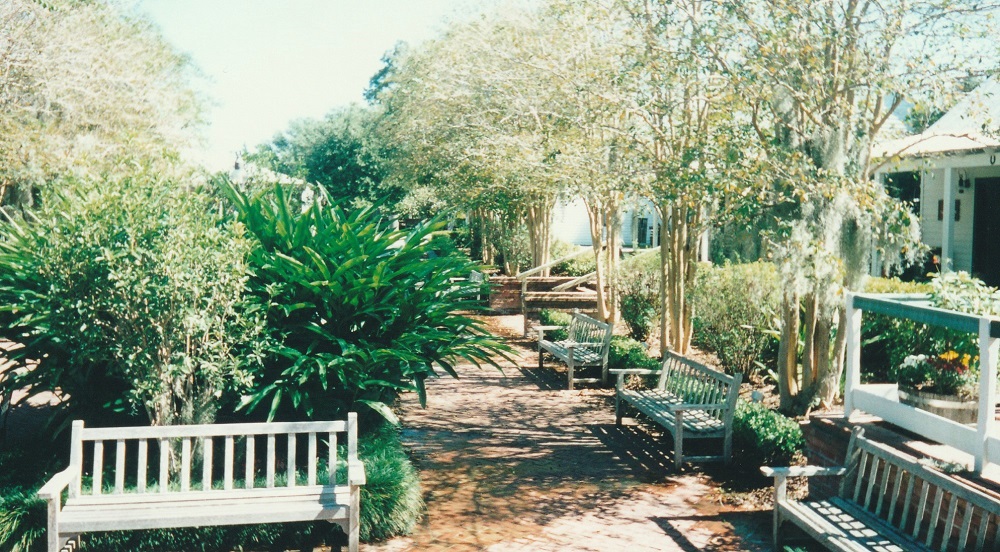
Another view of the courtyard
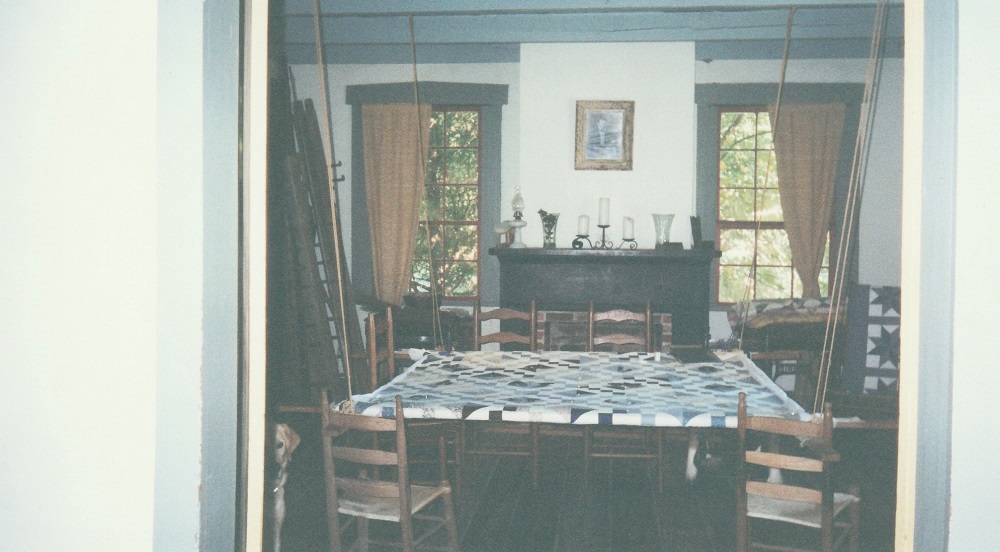
A quilt in progress, stretched out on a quilting frame
At the corners of the frame, you can see the ropes for hauling the frame up to the ceiling at the end of the day
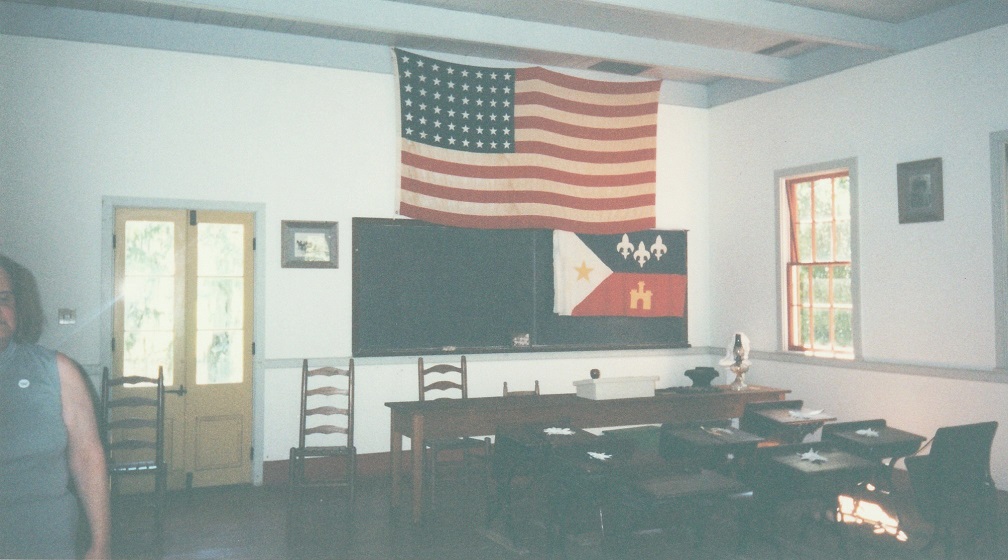
The schoolhouse, with Terry standing in the corner
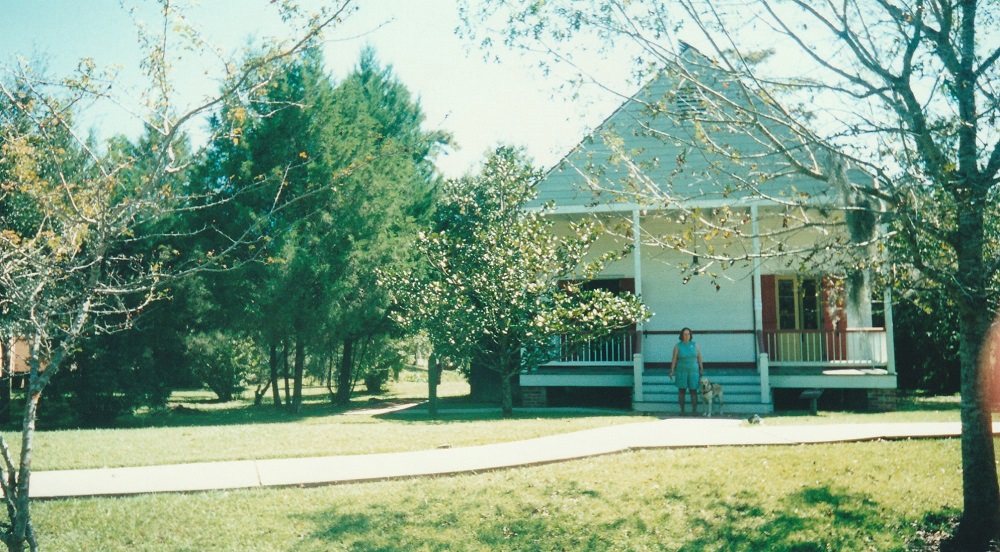
Someone's house, with Terry standing out front

Another building. This one is a work in progress; it's still being restored
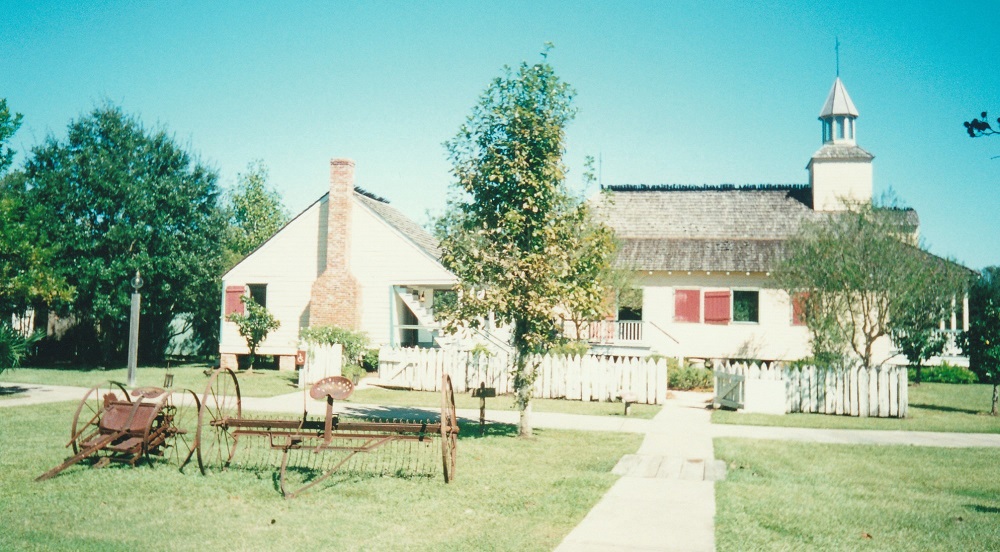
The church, with the adjoining parsonage and garden
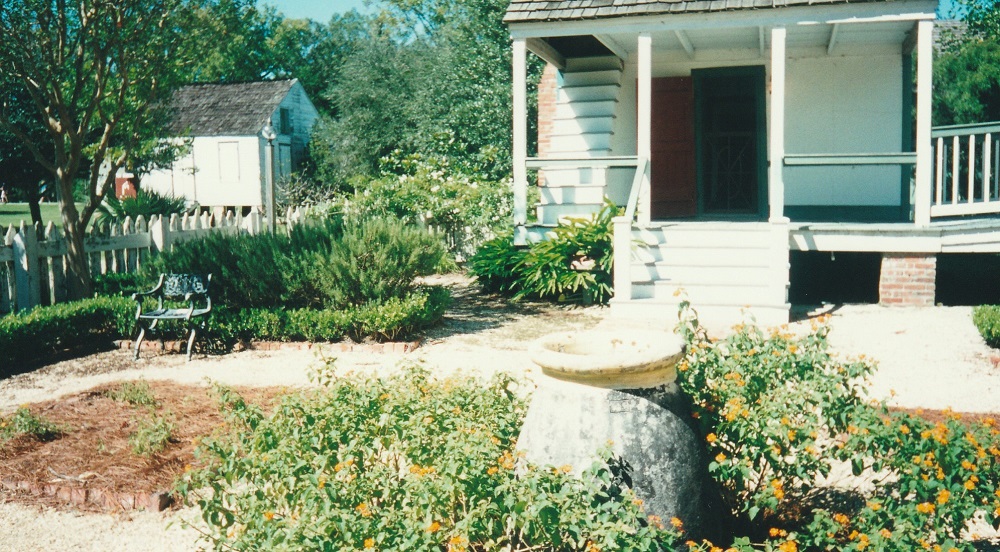
Closeup of the garden
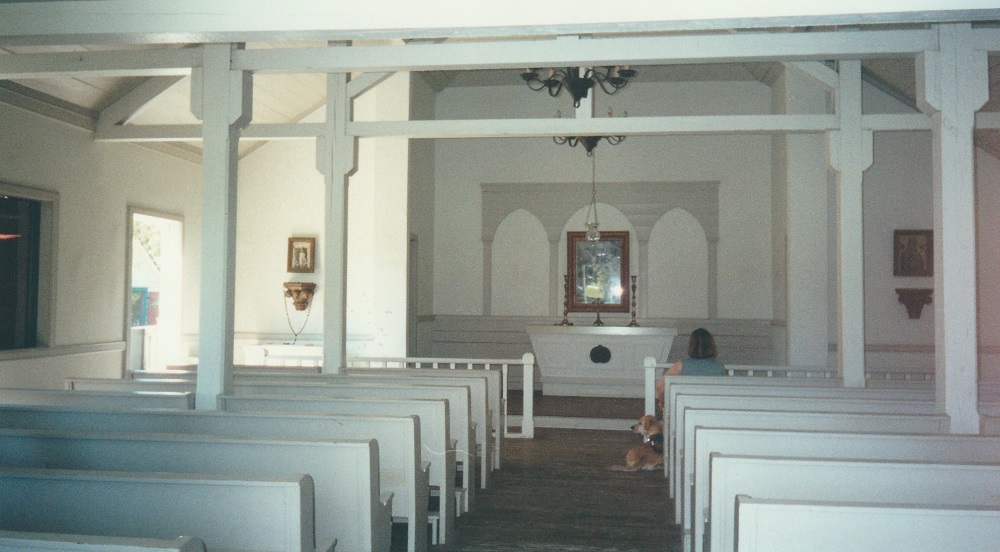
Inside the church. Is Terry praying?
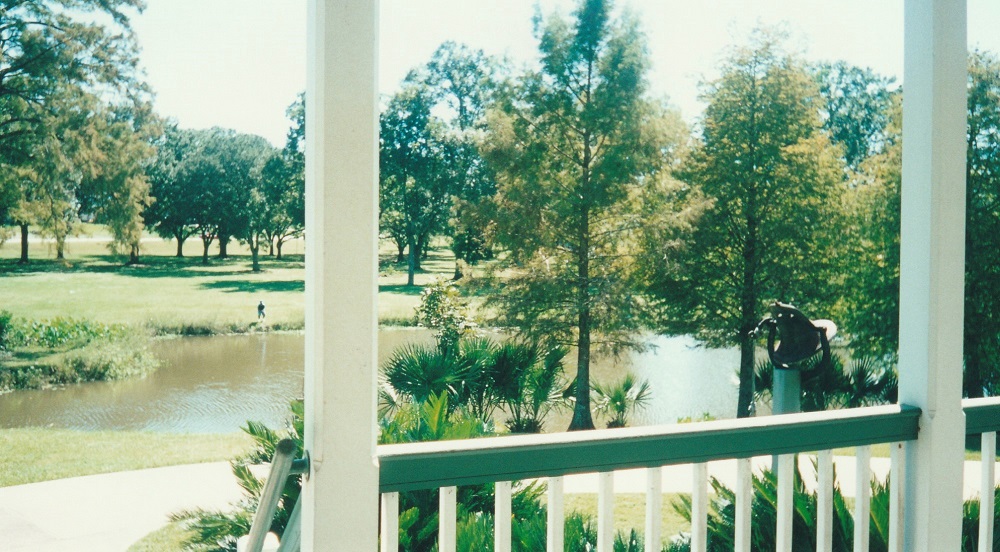
The bayou, from the front porch of the church
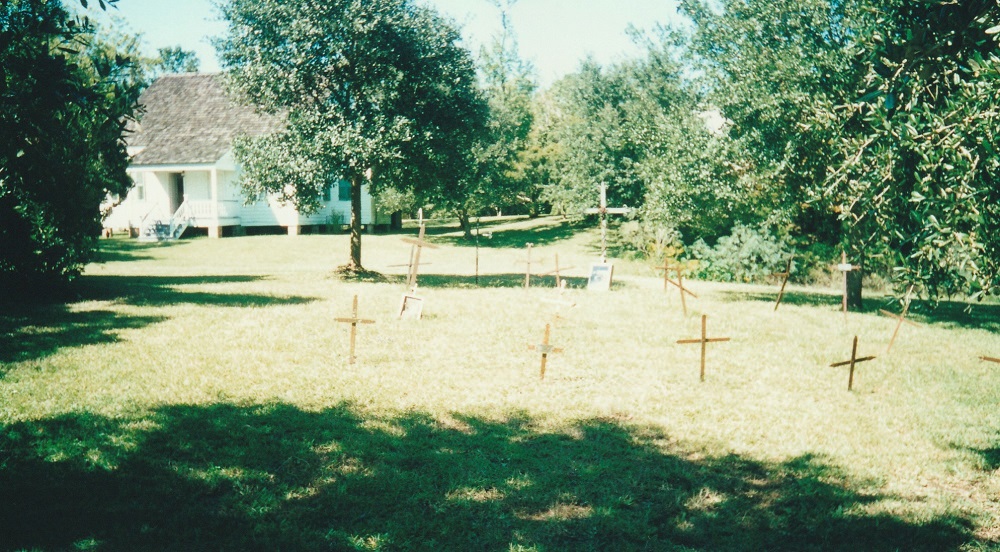
The cemetery out behind the church
One of the most interesting things I saw was a manually powered ferry. There are three ropes stretched across the water. Two of them pass through eye bolts on the sides of the boat, the third is draped across the middle of the boat, and the ferryman pulls on the middle rope to pull the boat across:
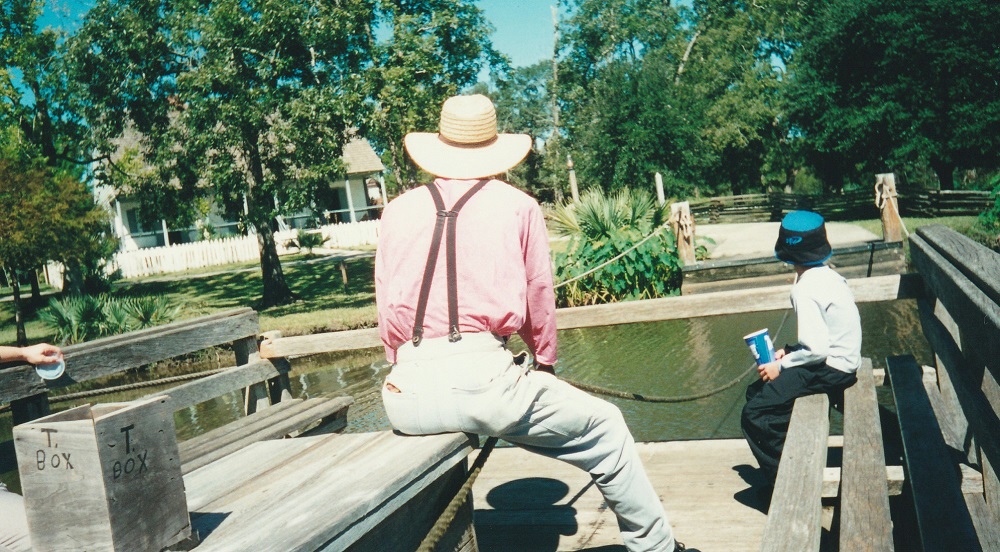
After we finished touring, we went back to the main entrance, where there is a dance pavillion. A Cajun band was playing, and we stayed to hear a few tunes:
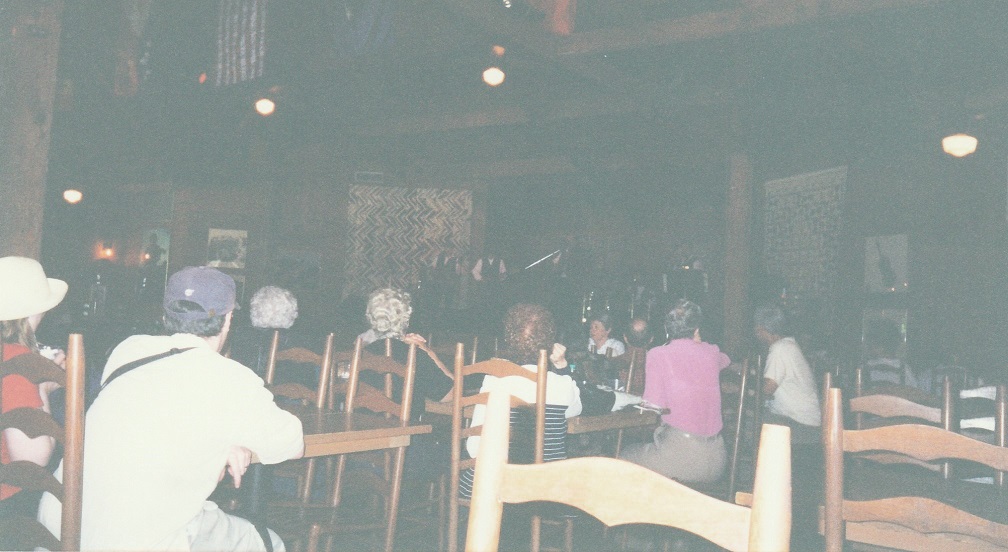
Yes, they're hard to see, but they're in there, trust me. We asked if they had a CD; it turned out that they didn't, but their bass player did, so we bought it. It turned out to be another disappointment. The music is OK, but it's too studio, not "real" enough.
On the way back, we stopped in at Avery Island, the home of the McIlhenny Co., which makes Tabasco Sauce. Our first stop was the company store:
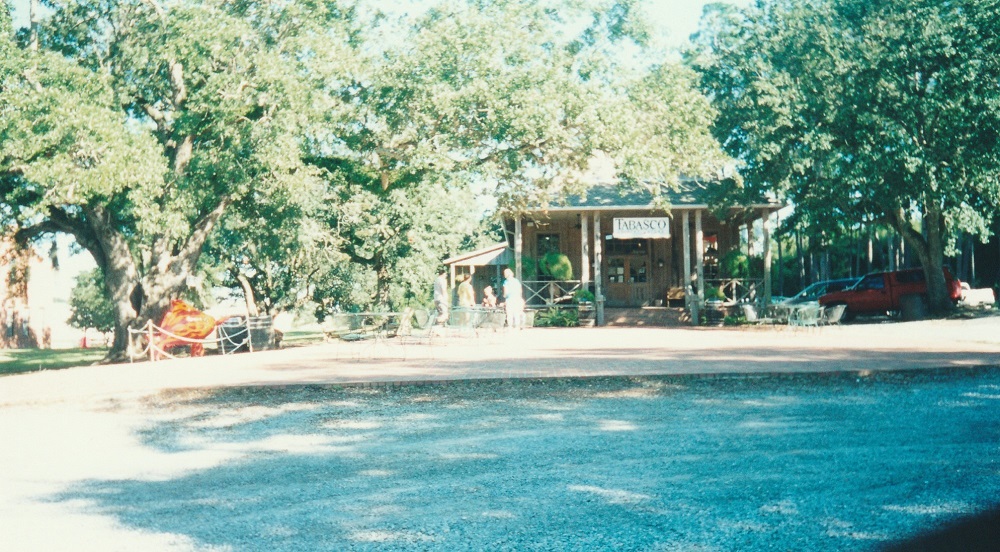
...which was about to close. We bought some Tabasco flavored Cheese Nips, and a bottle of their newest product, a Chipotle sauce. We then went on the factory tour, which was rather abbreviated, since the factory was not operating, it being Sunday. Still, we got to see an interesting video presentation on the history of Tabasco Sauce, and saw some exhibits. We also got three mini bottles of sauce (one each for me, Terry and North).
Here are two pictures of the factory, with some tourists blocking the view:
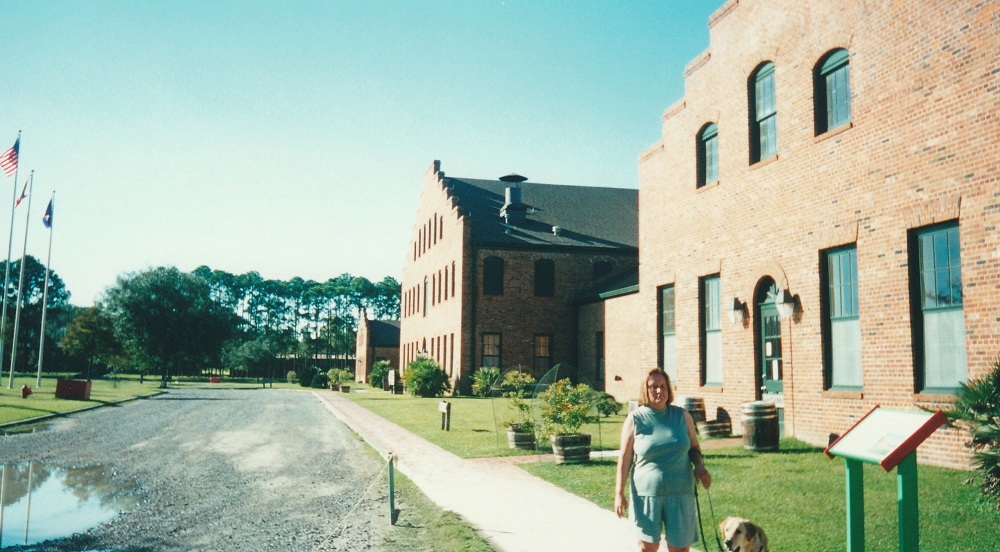
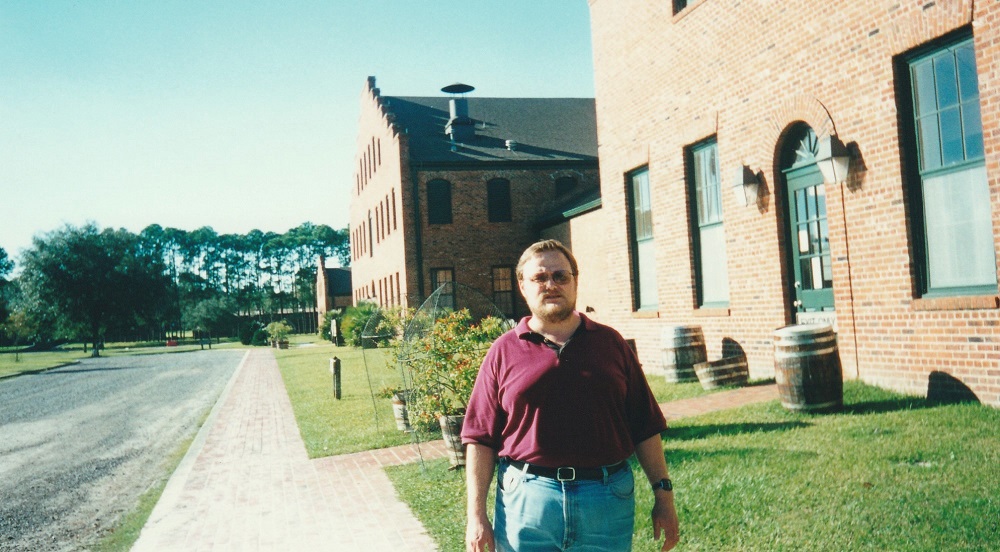
Behind me (well, behind Terry also, but you can see it better in the picture of me) is a Tabasco pepper plant, the same kind that are used to make the Sauce. Terry seemed to think it was unacceptable for me to pick one, so I didn't. But I did pick one up that had already fallen to the ground, and tasted it. Carefully. Very carefully. It was quite hot.
We then drove back to N.O. and had dinner at a Cajun/Creole restaurant called, of all things, Igor's.